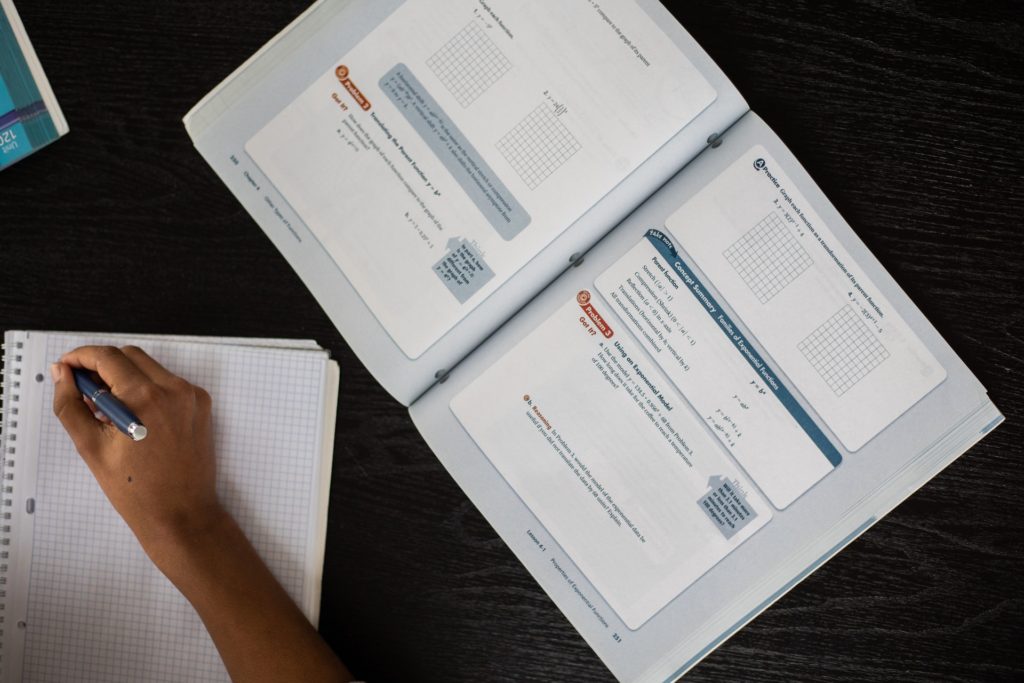Table of Contents
Teachers around the world are starting to realize that textbooks are an outdated form of course materials. Highly limited, full of outdated information, and terrible for students with most learning difficulties, textbooks need to be largely removed from classrooms in favor of multimedia textbook alternatives that activate the brain’s learning networks the way they were designed to learn.
However, one of the benefits of textbooks is that they are an easy, reliable place that teachers can know they can create student work. While pulling an occasional reading or activity from a textbook can still be ok, there are better places that teachers can go to reliably get lesson plans in the modern era.
Research shows that textbooks are far too repetitive, limited in scope, and stripped of practical context needed for true learning to take place. The theory of multisensory learning also suggests that the more sensory systems that are activated, the better students are able to learn about almost any topic.
In the end, rather than trying to find one easy place to go for everything, teachers should ideally be pulling course materials from a variety of places to get a larger range of perspectives, teaching styles, and experiences for students to consider.
Wondrium/Great Courses
One of the best reliable places to go for a variety of voices and backgrounds is Wondrium. Wondrium houses multiple collections of course materials on a wide variety of topics that could easily be assigned to students in place of a traditional textbook reading.
For example, one of the collections is called “The Great Courses” which are lectures from experts around the world on any topic from science to history, or from nutrition to the Mongol Empire. Rather than being short videos where the teacher will only be able to use a resource once, each course is broken down into chapter length lectures and so teachers can assign one chapter per homework session for an extended period of time.
The Great Courses lectures often come with additional PDFs from the professor to supplement learning and give a visual representation of the ideas being discussed. These can be used in class to facilitate lesson activities and be the jumping off point to show other perspectives and do course work surrounding the topic being discussed.
Being audio files, The Great Courses would be easier for students to complete as homework than a traditional physical text. Rather than having to find dedicated time to do homework reading, students can listen to audio content while doing other activities at the same time such as on their commute home or while eating dinner to name a few examples.
While teachers might prefer the idea of students listening to the lectures in front of a pad of paper taking copious notes, this may not always be the most effective way for students to learn. Certainly they will retain the most if they diligently note everything that is mentioned and later use those notes to review, but this misinterprets the purpose of homework not to mention a bit unrealistically idealistic.
Homework is to help students begin to think about topics and have a basic understanding in order to be able to come into class and do more targeted work with activities and exercises. Telling students to focus on enjoying the lectures and perhaps having them keep a journal of their thoughts about each lesson will make the assignment less onerous and perhaps something students actually look forward to listening to rather than dread reading and have to force themselves to complete.
In addition to students being able to listen as they ride home from school or exercise, audio content is fantastic for families to listen to together as they eat dinner or just spend time together. This way, busy parents don’t have to sit there and read to their children in order to do homework with them.
They can continue to cook, eat, clean up while they listen and then discuss as a family after the lecture concludes. This makes it easier for parents to be involved in their children’s learning and be able to help with other homework or test preparation.
Wondrium offers a free trial, so teachers should feel free to sign up here and do a short trial with their students. Since there is no risk with the free trial, teachers can then decide if the course content suits their needs.
In addition to being useful as a replacement for textbooks, Wondrium offers a lot of content in neuroscience, psychology, and education, all of which would be fantastic PD opportunities for teachers. Not only could lectures be assigned to students, but administration could have teachers listen to courses by education experts around the world and then discuss the ideas and how they work in the school’s context in meetings or via a forum discussion online.
Audible
Another fantastic source of audio content is Audible. Teachers who still love a particular physical book, but also want to utilize the benefits of multisensory learning can use Audible to give students an audiobook version of the course’s book.
While not all books will be available on Audible, they do have a massive collection and have everything from educational textbooks to novels that teachers could use as course materials. The benefit of audible is that the content can be accessed by whatever medium the student feels most comfortable with.
Students who would prefer to physically read can simply read the PDF or a physical book given by the teacher, but students who prefer the audio format can listen. Of course, there is also the option to mix both approaches to get the best of both worlds by listening to the audio and following along with the physical book, highlighting key passages to reread later.
Khan Academy
Khan Academy is a well known resource, but still many teachers do not use it to its full potential. Especially useful for difficult science or math concepts, Khan Academy does a fantastic job at giving students examples that make much more sense than a written text could ever do.
If students are struggling with a particularly difficult concept, assigning them a video on the topic can often be far clearer than a textbook or even a live lecture. Videos that go up online are often rerecorded multiple times and scripted very clearly to ensure they are as clear as possible for the largest number of people.
This means that they are often more clear and effective at explaining topics in a short period of time. Of course, this is not a cure-all for any misunderstanding, but it can be a solid way to ensure many students at least have a basic understanding of what is being discussed and then the teacher can work to spot treat misunderstandings or give alternative perspectives to those from the Khan Academy video.
In addition to being useful for spot treating difficult concepts, video lectures are usually a part of a longer set of courses that could be used to organize lesson plans in class. Simply following the concepts from a Khan Academy course can ensure that the teacher always has some good multisensory content directly related to their lesson without having to scour the internet for appropriate materials.
YouTube
Occasionally, scouring the internet for something specific may still be necessary to meet the teacher’s and the students’ specific needs. One of the best places to look for specific concepts not found in more formalized settings is just YouTube. While it was originally built as a social media platform for people to share silly videos with friends, YouTube is now one of the largest repositories of video based knowledge humans can access.
Basically any topic, no matter how niche or specific a teacher can imagine, there will likely be someone who has made a video on the topic or perhaps devoted an entire channel to the idea. While not as reliable or organized as something like Wondrium or Audible, some YouTube channels are incredibly organized sets of lessons and the creators of the videos will often group videos into playlists that teachers could follow or assign nightly or weekly as homework.
TED
TED talks are a fantastic resource and can inspire great class discussions. Easy to watch in a short period of time and full of expert perspectives and ideas, they can be a great addition to any course’s content.
The lectures from TED are some of the most respected expert lectures from around the world, but often are completely stand alone, making it a bit more difficult for teachers to be able to reliably find something to add to lesson plans regularly. Instead, TED talks are good for an occasional change of pace or additional perspective.
Conclusion
Textbooks are a relic of the past and should largely be removed from classrooms in favor of multimedia course materials. Research shows that multimedia resources are better designed for how the brain learns naturally and are especially useful for students who have trouble with traditional old-school learning.
The internet offers a large body of resources that teachers can use as course materials to replace textbooks. Regardless of the subject that the teacher teaches, each of the above options has a plethora of materials that could easily fill a year’s worth of homework assignments.
Teachers don’t need to feel that they must immediately change everything in their approaches to teaching, but they should work to slowly add more multimedia materials and learn how to integrate them successfully into their lesson plans.
Start with the free trial from Wondrium and go to The Great Courses section for a risk free set of course materials to assign to students. Teachers will quickly realize that students will enjoy learning more and be more excited to come to class and discuss what they listened to at home.
Want more like this? Make Lab to Class a part of your weekly professional development schedule by subscribing to updates below.



